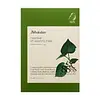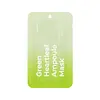What's inside
What's inside
 Key Ingredients
Key Ingredients

 Benefits
Benefits

 Ingredients Side-by-side
Ingredients Side-by-side

Houttuynia Cordata Water 88%
MaskingWater
Skin ConditioningGlycerin
HumectantDipropylene Glycol
Humectant1,2-Hexanediol
Skin ConditioningButylene Glycol
HumectantHydroxyacetophenone
AntioxidantArginine
MaskingCarbomer
Emulsion StabilisingAllantoin
Skin ConditioningEthylhexylglycerin
Skin ConditioningDisodium EDTA
Hydroxyethylcellulose
Emulsion StabilisingTrehalose
HumectantPanthenol
Skin ConditioningBetaine
HumectantSodium Hyaluronate
HumectantSedum Sarmentosum Extract
HumectantAnastatica Hierochuntica Extract
AstringentCentella Asiatica Extract
CleansingPotassium Hyaluronate
Skin ConditioningHydrolyzed Sodium Hyaluronate
Skin ConditioningHouttuynia Cordata Water 88%, Water, Glycerin, Dipropylene Glycol, 1,2-Hexanediol, Butylene Glycol, Hydroxyacetophenone, Arginine, Carbomer, Allantoin, Ethylhexylglycerin, Disodium EDTA, Hydroxyethylcellulose, Trehalose, Panthenol, Betaine, Sodium Hyaluronate, Sedum Sarmentosum Extract, Anastatica Hierochuntica Extract, Centella Asiatica Extract, Potassium Hyaluronate, Hydrolyzed Sodium Hyaluronate
Water
Skin ConditioningGlycerin
HumectantDipropylene Glycol
Humectant1,2-Hexanediol
Skin ConditioningDiethoxyethyl Succinate
SolventBetaine
HumectantAminobutyric Acid
Houttuynia Cordata Extract
Skin ConditioningTrehalose
HumectantPanthenol
Skin ConditioningHydroxyacetophenone
AntioxidantHydroxyethyl Urea
HumectantCarbomer
Emulsion StabilisingArginine
MaskingPolyglyceryl-10 Laurate
Skin ConditioningEthylhexylglycerin
Skin ConditioningPolyglyceryl-4 Laurate
EmulsifyingButylene Glycol
HumectantGlyceryl Glucoside
HumectantAdenosine
Skin ConditioningXanthan Gum
EmulsifyingDisodium EDTA
Tremella Fuciformis Polysaccharide
Emulsion StabilisingMentha Arvensis Leaf Oil
MaskingBarosma Betulina Leaf Extract
PerfumingBambusa Vulgaris Leaf Extract
Skin ConditioningLinum Usitatissimum Seed Extract
PerfumingRosa Damascena Flower Water
MaskingSodium Hyaluronate
HumectantPaeonia Suffruticosa Root Extract
Skin ProtectingVincetoxicum Atratum Extract
Skin ConditioningMagnesium PCA
HumectantSodium PCA
HumectantCalcium PCA
HumectantWater, Glycerin, Dipropylene Glycol, 1,2-Hexanediol, Diethoxyethyl Succinate, Betaine, Aminobutyric Acid, Houttuynia Cordata Extract, Trehalose, Panthenol, Hydroxyacetophenone, Hydroxyethyl Urea, Carbomer, Arginine, Polyglyceryl-10 Laurate, Ethylhexylglycerin, Polyglyceryl-4 Laurate, Butylene Glycol, Glyceryl Glucoside, Adenosine, Xanthan Gum, Disodium EDTA, Tremella Fuciformis Polysaccharide, Mentha Arvensis Leaf Oil, Barosma Betulina Leaf Extract, Bambusa Vulgaris Leaf Extract, Linum Usitatissimum Seed Extract, Rosa Damascena Flower Water, Sodium Hyaluronate, Paeonia Suffruticosa Root Extract, Vincetoxicum Atratum Extract, Magnesium PCA, Sodium PCA, Calcium PCA
Ingredients Explained
These ingredients are found in both products.
Ingredients higher up in an ingredient list are typically present in a larger amount.
1,2-Hexanediol is a synthetic liquid and another multi-functional powerhouse.
It is a:
- Humectant, drawing moisture into the skin
- Emollient, helping to soften skin
- Solvent, dispersing and stabilizing formulas
- Preservative booster, enhancing the antimicrobial activity of other preservatives
Arginine is an amino acid that is important for human development. Your body uses is it to produce hair keratin and skin collagen.
As a cosmetic ingredient, Arginine has antioxidant properties and can also help repair damaged skin. This ingredient is derived either synthetically or from animals.
Arginine isn't fungal acne safe when used in the presence of other lipids (fats, fatty acids, oils, esters, etc). Oils and fats occur naturally within the skin, so take caution when using Arginine if you're prone to fungal acne.
Learn more about ArginineBetaine is a common humectant (a substance that promotes retention of moisture). It's known to be gentle on the skin and can help balance hydration.
This ingredient is best for improving hydration and soothing irritated skin. Studies also show it helps even out skin tone.
Fun fact: Betaine is naturally created in the skin and body. The kind found within cosmetic products can be either plant-derived or synthetic.
Another name for betaine is trimethylglycine.
Learn more about BetaineButylene Glycol (or BG) is used within cosmetic products for a few different reasons:
Overall, Butylene Glycol is a safe and well-rounded ingredient that works well with other ingredients.
Though this ingredient works well with most skin types, some people with sensitive skin may experience a reaction such as allergic rashes, closed comedones, or itchiness.
Learn more about Butylene GlycolCarbomer is a polymer of acrylic acid. Its main role is to create a gel consistency.
A high amount of carbomer can cause pilling or balling up of products. Don't worry, most products contain 1% or less of carbomer.
Dipropylene Glycol is a synthetically created humectant, stabilizer, and solvent.
This ingredient helps:
Dipropylene glycol is technically an alcohol, but it belongs to the glycol family (often considered part of the ‘good’ alcohols). This means it is hydrating and gentle on skin unlike drying solvent alcohols like denatured alcohol.
As a masking agent, Dipropylene Glycol can be used to cover the smell of other ingredients. However, it does not have a scent.
Studies show Dipropylene Glycol is considered safe to use in skincare.
Learn more about Dipropylene GlycolDisodium EDTA plays a role in making products more stable by aiding other preservatives.
It is a chelating agent, meaning it neutralizes metal ions that may be found in a product.
Disodium EDTA is a salt of edetic acid and is found to be safe in cosmetic ingredients.
Learn more about Disodium EDTAEthylhexylglycerin (we can't pronounce this either) is commonly used as a preservative and skin softener. It is derived from glyceryl.
You might see Ethylhexylglycerin often paired with other preservatives such as phenoxyethanol. Ethylhexylglycerin has been found to increase the effectiveness of these other preservatives.
Glycerin is already naturally found in your skin. It helps moisturize and protect your skin.
A study from 2016 found glycerin to be more effective as a humectant than AHAs and hyaluronic acid.
As a humectant, it helps the skin stay hydrated by pulling moisture to your skin. The low molecular weight of glycerin allows it to pull moisture into the deeper layers of your skin.
Hydrated skin improves your skin barrier; Your skin barrier helps protect against irritants and bacteria.
Glycerin has also been found to have antimicrobial and antiviral properties. Due to these properties, glycerin is often used in wound and burn treatments.
In cosmetics, glycerin is usually derived from plants such as soybean or palm. However, it can also be sourced from animals, such as tallow or animal fat.
This ingredient is organic, colorless, odorless, and non-toxic.
Glycerin is the name for this ingredient in American English. British English uses Glycerol/Glycerine.
Learn more about GlycerinHydroxyacetophenone is antioxidant with skin conditioning and soothing properties. It also boosts the efficiency of preservatives.
This ingredient is not irritating or sensitizing.
Panthenol is a common ingredient that helps hydrate and soothe the skin. It is found naturally in our skin and hair.
There are two forms of panthenol: D and L.
D-panthenol is also known as dexpanthenol. Most cosmetics use dexpanthenol or a mixture of D and L-panthenol.
Panthenol is famous due to its ability to go deeper into the skin's layers. Using this ingredient has numerous pros (and no cons):
Like hyaluronic acid, panthenol is a humectant. Humectants are able to bind and hold large amounts of water to keep skin hydrated.
This ingredient works well for wound healing. It works by increasing tissue in the wound and helps close open wounds.
Once oxidized, panthenol converts to pantothenic acid. Panthothenic acid is found in all living cells.
This ingredient is also referred to as pro-vitamin B5.
Learn more about PanthenolSodium Hyaluronate is hyaluronic acid's salt form. It is commonly derived from the sodium salt of hyaluronic acid.
Like hyaluronic acid, it is great at holding water and acts as a humectant. This makes it a great skin hydrating ingredient.
Sodium Hyaluronate is naturally occurring in our bodies and is mostly found in eye fluid and joints.
These are some other common types of Hyaluronic Acid:
Learn more about Sodium HyaluronateTrehalose is a disaccharide made of two glucose molecules (glucose is sugar!). Trehalose is used to help moisturize skin. It also has antioxidant properties.
As a humectant, trehalose helps draw moisture from the air to your skin. This helps keep your skin hydrated.
Due to its antioxidant properties, trehalose may help with signs of aging. Antioxidants help fight free-radical molecules, unstable molecules that may damage your skin.
In medicine, trehalose and hyaluronic acid are used to help treat dry eyes.
Some animals, plants, and bacteria create trehalose as a source of energy to survive freeze or lack of water.
Learn more about TrehaloseWater. It's the most common cosmetic ingredient of all. You'll usually see it at the top of ingredient lists, meaning that it makes up the largest part of the product.
So why is it so popular? Water most often acts as a solvent - this means that it helps dissolve other ingredients into the formulation.
You'll also recognize water as that liquid we all need to stay alive. If you see this, drink a glass of water. Stay hydrated!
Learn more about Water